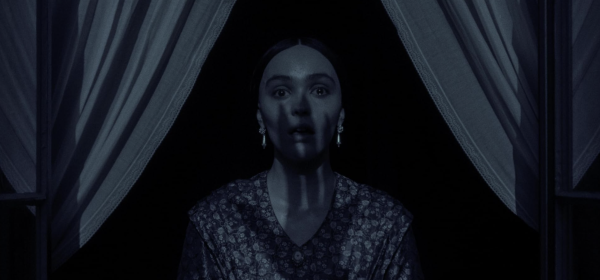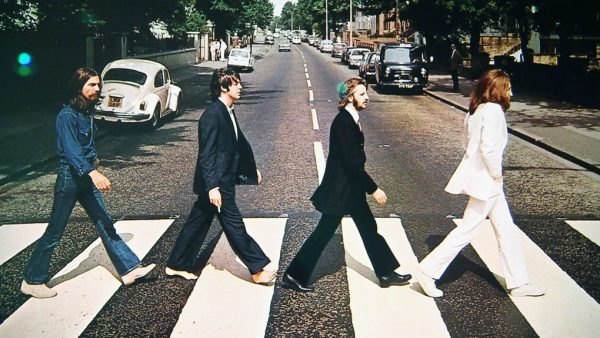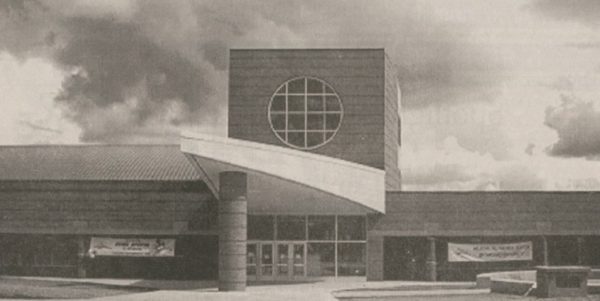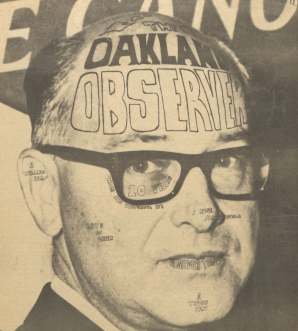OU skaters take to the ice
When Jonathan Cassar leans back into a spread eagle, toes turned out, body extended from the tips of his boots to the ends of his fingers, crowds gasp and judges swoon. Even more impressively, Cassar’s extraordinary balancing act includes meshing national-level figure skating with full-time study.
This weekend, Cassar, a senior, and three other Oakland University students will compete at the Sectional Championships, the second and final step towards qualifying for the 2010 AT&T U.S. Figure Skating Championships in January.
The results at Nationals are used to determine who will represent the United States at the Winter Olympics in Vancouver.
Sectionals
Cassar and Amanda Jagow, a freshmen, finished fourth in their events at the Eastern Great Lakes Regional Championship last month.
Ameena Sheikh and partner Aaron Van Cleave, will battle for placement in the senior pairs event at the Midwestern Sections Nov. 19-21 in Kansas. Laura Lepzinski, a junior, along with partner Ethan Burgess, will contend in the senior pairs’ division at the Pacific Coast Sectional Championship in Wyoming.
Pair teams, a small but elite discipline in figure skating in which partners perform difficult lifts, twists, and throw jumps in addition to side-by-side elements, do not compete at the Regional Championships due to the small number of teams in the United States.
Only 1 percent of skaters pass their senior tests. Senior level is the highest of the eight levels in figure skating and is a prerequisite for consideration for placement on the World and Olympic Team.
Singles skaters
Cassar, who qualified for Nationals last year on the senior level, strives to combine his major, dance, with his passion, figure skating.
“My goal is to have the audience enjoy the skating,” says Cassar. “I want the people watching to walk away from the event with something more, making the spectators think about the movement like an art form — after all, it really is an art form.”
Cassar’s performance involves unusual musical choices and movements. Cassar worked with world-renowned choreographer David Wilson of Toronto to integrate modern dance techniques.
His long program, set to the haunting tones of “Schindler’s List,” intimately portrays unspeakable grief, using posture and arm movements to communicate emotional pain. Six triple jumps highlight Cassar’s technical skills.
He acknowledges the stress of combining high-level athletic pursuits with education.
“It’s hard to find enough hours in a day to fit in studies and work along with school and training,” he said. “I get a little burned out and unmotivated, but so far I’ve made it through.”
Cassar trains 20 hours a week at the Detroit Skating Club in Bloomfield Hills with Julie Berlin and two-time Olympian Jason Dungjen.
He hopes to improve his national ranking from last year in his first trip to Nationals as a senior man.
This year, however, he must place in the top four of 10 senior men to earn a spot at the national championships.
While Cassar’s focus is squarely on Nationals, OU freshman Jagow is thrilled to compete at her first sectional championship.
“I honestly could not believe that I had actually made it (to sectionals),” Jagow said.
Jagow was first-alternate last year.
“It was very hard to end on that note last year, so I came in a mind set this year that I wanted to redeem myself and make Sectionals,” Jagow said.
Jagow, who skates 18 hours each week in Rochester, is supervised and mentored by Vicky Weber and her daughter Lindsey Weber. Lindsey is a senior human resources management major at OU.
Like Cassar, Jagow enjoys the performance aspects of figure skating and focuses her goals for sectionals on completing two “clean” programs, with no errors on technical elements.
Jagow’s long-term career goal is to be a high school math teacher and she is relatively new to the balancing act of higher education and elite skating.
“It’s tough to balance school and skating,” Jagow said. “I would have to say that it does take certain sacrifices.”
Cassar and Jagow juggle the heavy demands of school, skating, and, in Cassar’s case, work.
Pair skaters
As pairs skaters, Sheikh and Lepzinski must also account for their partners’ schedules.
For Lepzinski, the demands of balancing a psychology major with high-level training are worthwhile.
“It’s tough, definitely a lot of work, but I needed another outlet to have a good balance,” Lepzinski said.
The pair trains more than 20 hours each week with 2006 U.S. Olympian Aaron Parchem and Zuzanna Szwed at the Detroit Skating Club.
Lepzinski and Burgess emphasize strength and conditioning training to lessen their risks of injury, and dance to improve their on-ice expression and relationship.
“It’s a journey together,” Lepzinski said.
The two programs they perform emphasize the relationship between the partners. The programs utilize difficult and dramatic technical elements.
The pair completes the most difficult level of lifts and triple twists. They also throw triple jumps, which involve Burgess throwing Lepzinski into the air and her completing three revolutions before landing.
Their most serious challenge is to improve the triple jumps. They hope to improve their ninth-place national ranking from last year to qualify for international competition.
Lepzinski and Burgess chose to compete out of the Pacific Coast Sectionals instead of the Midwestern Sectionals. They had this option because Burgess is a native of Los Angeles.
With only four pairs competing at that sectional, Lepzinski and Burgess are guaranteed to qualify for Nationals as long as they appear at the Sectional Championships.
Sheikh and Van Cleave are one of six senior pair teams competing at the Midwestern Sectionals and they must finish in the top four to qualify for Nationals.
They placed sixth in the junior level at their national debut last year.
“The top senior teams have that secure, confident movement,” Sheikh said. “We want to show senior quality.”
Their programs include a short program that emphasizes eight required elements, and a less restricted long program that includes twelve elements.
Performing to a modern version of Concierto de Aranjuez and music from the soundtrack to “Somewhere in Time,” Sheikh and Van Cleave attempt to captivate their viewers with their speed and grace.
Sheikh, who acknowledges a tendency to rush in competition, has set herself a goal of focusing on one element at a time while performing their programs.
She hopes to have a career in political journalism, go to law school and work as a touring skater. She also hopes to compete in the 2014 Olympics.
Sheikh is proud to be one of the few Muslim figure skaters competing in the United States.
“My religion is empowering and says that everyone should make use of their talents,” Sheikh said. “I hope that it opens doors (for Muslims).”
All four OU skaters who will compete this weekend at the sectional championships manage education and work with the demands of a difficult sport.
“(Skating) is not as easy as it seems and it takes a lot of dedication, hard work, and tons of time to train to be a good skater,” Jagow said. “I love to just put on a show and skate clean, especially in competitions.”







